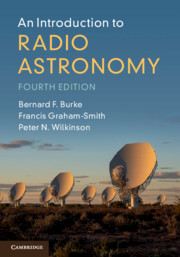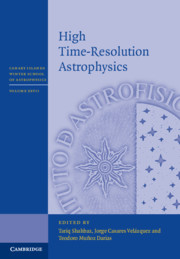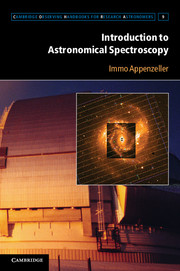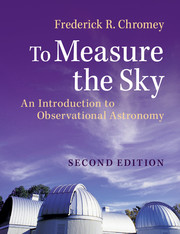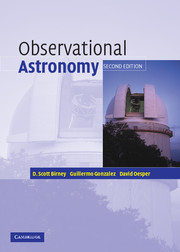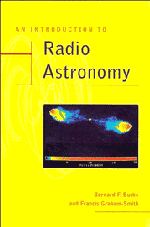An Introduction to Radio Astronomy
Radio astronomy is an active and rapidly expanding field due to advances in computing techniques, with several important new instruments on the horizon. This text provides a thorough introduction to radio astronomy and its contribution to our understanding of the universe, bridging the gap between basic introductions and research-level treatments. It begins by covering the fundamentals physics of radio techniques, before moving on to single-dish telescopes and aperture synthesis arrays. Fully updated and extensively rewritten, the fourth edition places greater emphasis on techniques, with detailed discussion of interferometry in particular, and comprehensive coverage of digital techniques in the appendices. The science sections are fully revised, with new author Peter N. Wilkinson bringing added expertise to the sections on pulsars, quasars and active galaxies. Spanning the entirety of radio astronomy, this is an engaging introduction for students and researchers approaching radio astronomy for the first time.
- Additional materials are available online, including up-to-date colour images
- Includes both theory and techniques, providing a comprehensive 'one-stop' introduction to the field, allowing a smooth transition to more advanced research level material
- More advanced material is listed in the further reading sections of each chapter for the interested reader
Reviews & endorsements
'An engaging introduction for students and researchers approaching this observational field for the first time.' All About Space
'… the book succeeds in its overall aims, and the fourth edition, with nearly a hundred pages of extra material and substantial additional on-line resources, is a useful upgrade from the third.' Martin Hardcastle, The Observatory
'An Introduction to Radio Astronomy is impressively comprehensive in addressing the basic theory, techniques, telescopes, and astrophysics in the radio regime … The authors adopt a lecture-like writing style that is easy to read, and the text is interspersed with relatively clean, simple figures.' Matthew L. Lister, Physics Today
'… the authors include comprehensive discussion of correlation, digitization, and modern techniques of image restoration. The book concludes with a masterful summary of the recent extraordinary advances in our knowledge of the universe and its constituents. Many of these have involved significant contributions at radio wavelengths.' D. E. Hogg, Choice
Product details
October 2019Hardback
9781107189416
540 pages
253 × 178 × 27 mm
1.2kg
329 b/w illus.
Available
Table of Contents
- Preface
- Acknowledgements
- Part I. The Emission, Propagation, and Detection of Radio Waves:
- 1. The role of radio observations in astronomy
- 2. Emission and general properties of radio waves
- 3. Spectral lines
- 4. Radio wave propagation
- 5. The nature of the received radio signal
- 6. Radiometers
- 7. Spectrometers and polarimeters
- Part II. Radio Telescopes and Aperture Synthesis:
- 8. Single-aperture radio telescopes
- 9. The basics of interferometry
- 10. Aperture synthesis
- 11. Further interferometric techniques
- Part III. The Radio Cosmos:
- 12. The Sun and the planets
- 13. Stars and nebulae
- 14. The Milky Way galaxy
- 15. Pulsars
- 16. Active galaxies
- 17. The radio contributions to cosmology
- Appendix 1. Fourier transforms
- Appendix 2. Celestial coordinates and time
- Appendix 3. Digitization
- Appendix 4. Calibrating polarimeters
- Appendix 5. Spherical harmonics
- References
- Index.

